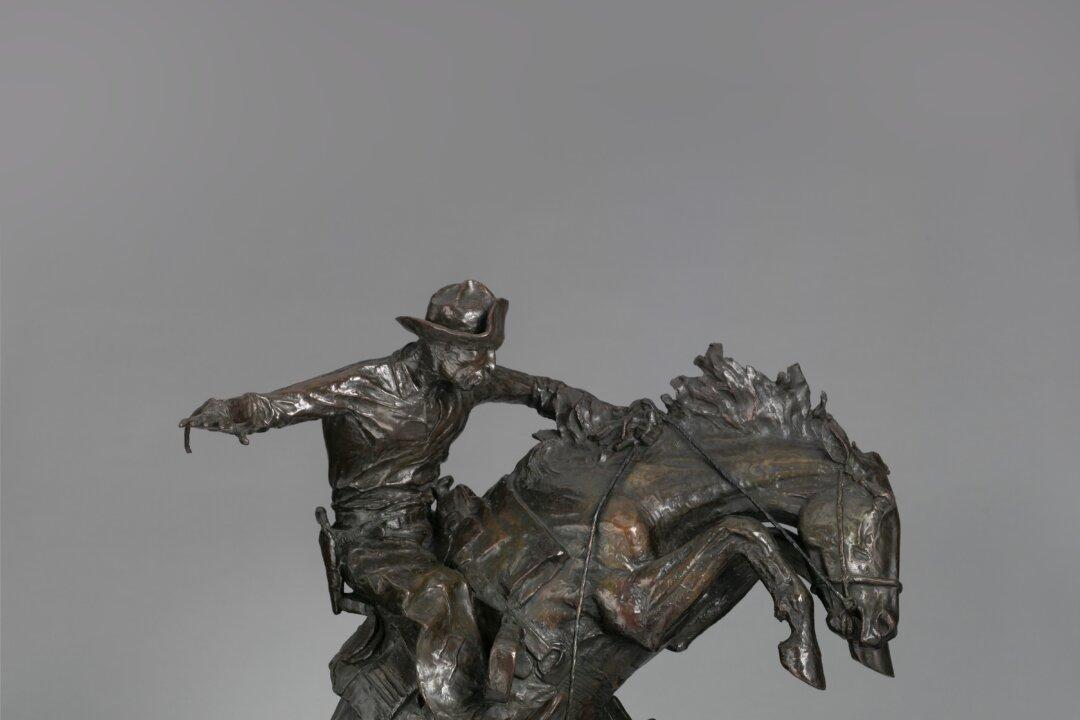Through his writing, illustrations, paintings, and sculptures, Frederic Remington (1861–1909) reminds us of the Old West. His art reflects life at the frontier so vividly that many people assume he was a Westerner—an impression that his publisher, Harper’s Weekly, happily embellished. But Remington was an Easterner, a born and bred New Yorker.
Remington may now be more known for his sculptures than his famous paintings, yet he never intended to be a sculptor. According to the Remington Museum, he was quite content as a painter. But after playwright Augustus Thomas saw how easily the artist could reposition his figures in a composition, he said Remington had “the sculptor’s degree of vision,” and this comment inspired Remington. Remington’s friend, the sculptor Frederick Ruckstull, further encouraged him with a supply of materials, and so Remington began to sculpt.






